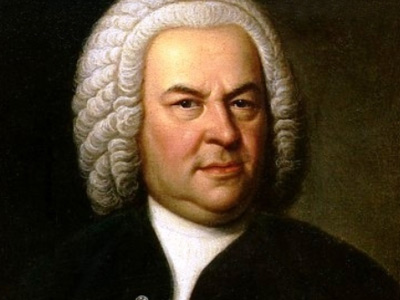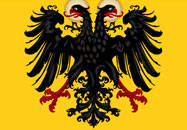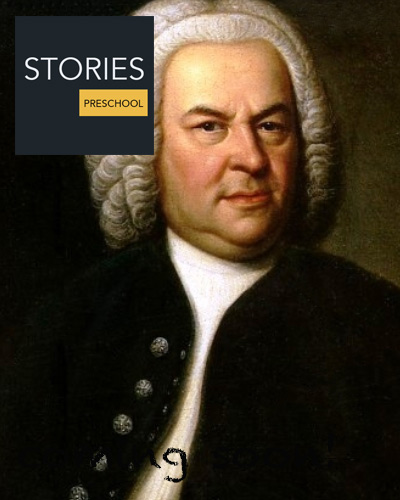Johann Sebastian Bach (1685-1750)

Leipzig (1723–1750)
In 1723, Bach was appointed Thomaskantor, Cantor of the Thomasschule at the Thomaskirche (St. Thomas Church) in Leipzig, which provided music for four churches in the city, the Thomaskirche, the Nikolaikirche (St. Nicholas Church), and to a lesser extent the Neue Kirche (New Church) and the Peterskirche (St. Peter's Church). This was "the leading cantorate in Protestant Germany", located in the mercantile city in the Electorate of Saxony, which he held for twenty-seven years until his death. During that time he gained further prestige through honorary appointments at the courts of Köthen and Weissenfels, as well as that of the Elector Frederick Augustus (who was also King of Poland) in Dresden. Bach frequently disagreed with his employer, Leipzig's city council, who he thought were "penny-pinching".
Appointment in Leipzig
Johann Kuhnau had been Thomaskantor in Leipzig from 1701 until his death on 5 June 1722. Bach had visited Leipzig during Kuhnau's tenure: in 1714 he attended the service at the St. Thomas church on the first Sunday of Advent, and in 1717 he had tested the organ of the Paulinerkirche. In 1716 Bach and Kuhnau had met on the occasion of the testing and inauguration of an organ in Halle.
After having been offered the position, Bach was invited to Leipzig only after Georg Philipp Telemann indicated that he would not be interested in relocating to Leipzig. Telemann went to Hamburg where he "had his own struggles with the city's senate".
Bach was required to instruct the students of the Thomasschule in singing and to provide church music for the main churches in Leipzig. Bach was required to teach Latin, but he was allowed to employ four "prefects" (deputies) to do this instead. The prefects also aided with musical instruction. A cantata was required for the church services on Sundays and additional church holidays during the liturgical year.
Cantata Cycle Years (1723–1729)
Bach usually led performances of his cantatas, most of which were composed within three years of his relocation to Leipzig. The first was Die Elenden sollen essen, BWV 75, performed in the Nikolaikirche on 30 May 1723, the first Sunday after Trinity. Bach collected his cantatas in annual cycles. Five are mentioned in obituaries, three are extant. Of the more than three hundred cantatas which Bach composed in Leipzig, over one hundred have been lost to posterity. Most of these concerted works expound on the Gospel readings prescribed for every Sunday and feast day in the Lutheran year. Bach started a second annual cycle the first Sunday after Trinity of 1724 and composed only chorale cantatas, each based on a single church hymn. These include O Ewigkeit, du Donnerwort, BWV 20, Wachet auf, ruft uns die Stimme, BWV 140, Nun komm, der Heiden Heiland, BWV 62, and Wie schön leuchtet der Morgenstern, BWV 1.
Bach drew the soprano and alto choristers from the School, and the tenors and basses from the School and elsewhere in Leipzig. Performing at weddings and funerals provided extra income for these groups; it was probably for this purpose, and for in-school training, that he wrote at least six motets. As part of his regular church work, he performed other composers' motets, which served as formal models for his own.
Bach's predecessor as Cantor, Johann Kuhnau, had also been music director for the Paulinerkirche, the church of Leipzig University. But when Bach was installed as Cantor in 1723, he was put in charge only of music for "festal" (church holiday) services at the Paulinerkirche; his petition to provide music also for regular Sunday services there (for a corresponding salary increase) went all the way up to the Elector but was denied. After this, in 1725, Bach "lost interest" in working even for festal services at the Paulinerkirche and appeared there only on "special occasions". The Paulinerkirche had a much better and newer (1716) organ than did the Thomaskirche or the Nikolaikirche. Bach was not required to play any organ in his official duties, but it is believed he liked to play on the Paulinerkirche organ "for his own pleasure".
Bach broadened his composing and performing beyond the liturgy by taking over, in March 1729, the directorship of the Collegium Musicum, a secular performance ensemble started by Telemann. This was one of the dozens of private societies in the major German-speaking cities that was established by musically active university students; these societies had become increasingly important in public musical life and were typically led by the most prominent professionals in a city. In the words of Christoph Wolff, assuming the directorship was a shrewd move that "consolidated Bach's firm grip on Leipzig's principal musical institutions". Year round, Leipzig's Collegium Musicum performed regularly in venues such as the Café Zimmermann, a coffeehouse on Catherine Street off the main market square. Many of Bach's works during the 1730s and 1740s were written for and performed by the Collegium Musicum; among these were parts of his Clavier-Übung (Keyboard Practice) and many of his violin and keyboard concertos.
Middle Years of the Leipzig Period (1730–1739)
In 1733, Bach composed a mass for the Dresden court (Kyrie and Gloria) which he later incorporated in his Mass in B Minor. He presented the manuscript to the Elector in an eventually successful bid to persuade the prince to give him the title of Court Composer. He later extended this work into a full mass, by adding a Credo, Sanctus', and Agnus Dei, the music for which was partly based on his own cantatas, partly newly composed. Bach's appointment as Court Composer was part of his long-term struggle to achieve greater bargaining power with the Leipzig council. Between 1737 and 1739, Bach's former pupil Carl Gotthelf Gerlach held the directorship of the Collegium Musicum.
In 1735 Bach started to prepare his first publication of organ music, which was printed as third Clavier-Übung in 1739. From around that year he started to compile and compose the set of preludes and fugues for harpsichord that would become his second book of The Well-Tempered Clavier.
Last Period (1740–1750)
From 1740 to 1748 Bach copied, transcribed, expanded and/or programmed music in an older polyphonic style (stile antico), by, among others, Palestrina (BNB I/P/2), Kerll (BWV 241), Torri (BWV Anh. 30), Bassani (BWV 1081), Gasparini (Missa Canonica) and Caldara (BWV 1082). Bach's own style shifted in the last decade of his life, showing an increased integration of polyphonic structures and canons, and other elements of the stile antico. His fourth and last Clavier-Übung volume, the Goldberg Variations, for two-manual harpsichord, contained nine canons and was published in 1741. Throughout this period Bach also continued to adopt music of contemporaries such as Handel (BNB I/K/2) and Stölzel (BWV 200), and gave many of his own earlier compositions, such as the St Matthew and St John Passions and the Great Eighteen Chorale Preludes, their final revisions. He also programmed and adapted music by composers of a younger generation, including Pergolesi (BWV 1083) and his own students such as Goldberg (BNB I/G/2).
In 1746 Bach was preparing to enter Lorenz Christoph Mizler's Society of Musical Sciences (de). In order to be admitted Bach had to submit a composition, for which he chose his Canonic Variations on "Vom Himmel hoch da komm' ich her", and a portrait, which was painted by Elias Gottlob Haussmann and featured Bach's Canon triplex á 6 Voc. In May 1747, Bach visited the court of King Frederick II of Prussia at Potsdam. The king played a theme for Bach and challenged him to improvise a fugue based on his theme. Bach obliged, playing a three-part fugue on one of Frederick's fortepianos, which was a new type of instrument at the time. Upon his return to Leipzig he composed a set of fugues and canons, and a trio sonata, based on the Thema Regium (theme of the king). Within a few weeks this music was published as The Musical Offering, dedicated to Frederick. The Schübler Chorales, a set of six chorale preludes transcribed from cantata movements Bach had composed some two decades earlier, was published within a year after that. Around the same time, the set of five Canonic Variations which Bach had submitted when entering Mizler's Society in 1747, was also printed.
Two large-scale compositions occupied a central place in Bach's last years. From around 1742 he wrote and reworked the various canons and fugues of The Art of Fugue, which he continued to prepare for publication until shortly before his death. After having extracted a cantata, BWV 191, from his 1733 Kyrie-Gloria Mass for the Dresden court in the mid 1740s, Bach expanded that Mass setting into his Mass in B minor in the last years of his life. Stauffer describes it as "Bach's most universal church work. Consisting mainly of recycled movements from cantatas written over a thirty-five-year period, it allowed Bach to survey his vocal pieces one last time and pick select movements for further revision and refinement." Although the complete mass was never performed during the composer's lifetime, it is considered to be among the greatest choral works of all time.
In January 1749 Bach's daughter Elisabeth Juliane Friederica married his pupil Johann Christoph Altnickol. Bach's health was however declining. On 2 June, Heinrich von Brühl wrote to one of the Leipzig burgomasters to request that his music director, Johann Gottlob Harrer, fill the Thomaskantor and Director musices posts "upon the eventual ... decease of Mr. Bach". Becoming blind, Bach underwent eye surgery, in March 1750, and again in April, from the British eye surgeon John Taylor. Bach died on 28 July 1750, from complications connected to the unsuccessful treatment. An inventory drawn up a few months after Bach's death, shows that his estate included five harpsichords, two lute-harpsichords, three violins, three violas, two cellos, a viola da gamba, a lute and a spinet, along with 52 "sacred books", including works by Martin Luther and Josephus. The composer's son Carl Philipp Emanuel saw to it that The Art of Fugue, although still unfinished, was published in 1751. Together with one of the composer's former students, Johann Friedrich Agricola, this son of Bach also wrote the obituary ("Nekrolog") which was published in Mizler's Musikalische Bibliothek (de), the organ of the Society of Musical Sciences, in 1754.
HISTORY

RESOURCES
This article uses material from the Wikipedia article "Johann Sebastian Bach (1685-1750)", which is released under the Creative Commons Attribution-Share-Alike License 3.0.
© Stories Preschool. All Rights Reserved.










